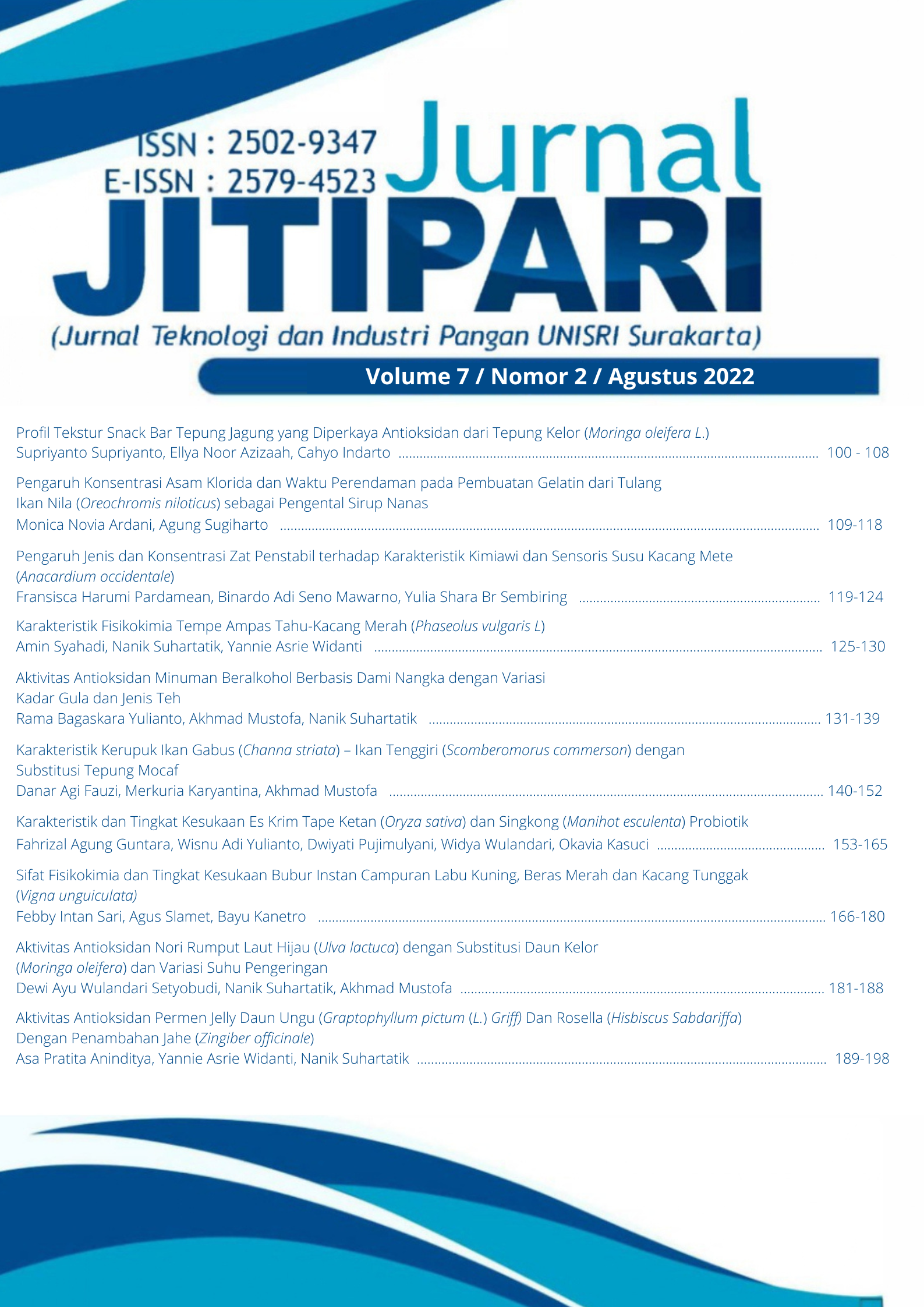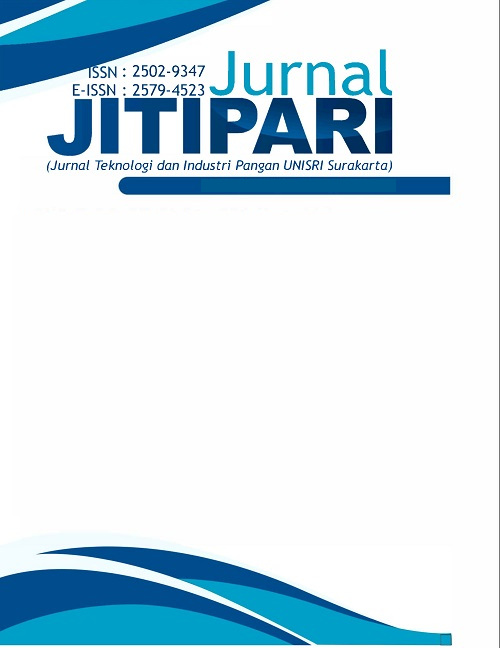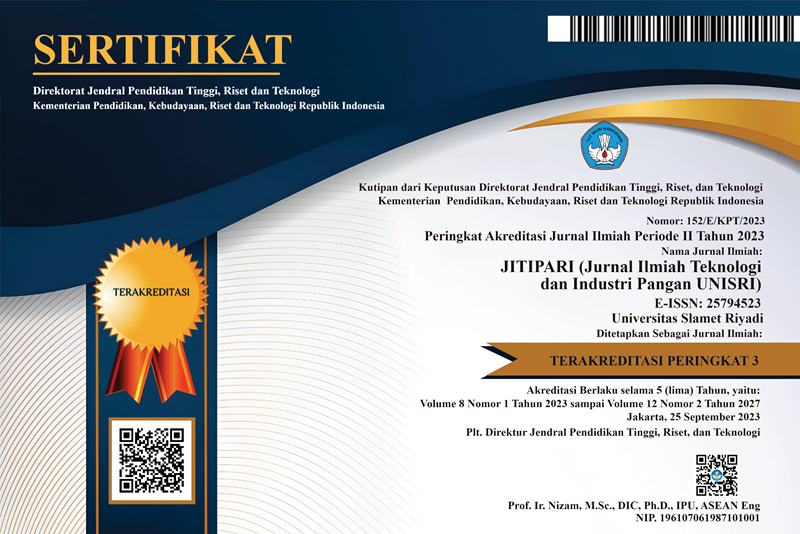Profil Tekstur Snack Bar Tepung Jagung yang Diperkaya Antioksidan dari Tepung Kelor (Moringa oleifera L.)
DOI:
https://doi.org/10.33061/jitipari.v7i2.7511Abstract
Snack bars are known to meet consumers' needs for nutrition, taste and practicality. There needs to be additional raw materials that are high in nutrients so that the products produced are beneficial to the body and also provide health effects. One plant that is high in nutrients and also provides benefits for the body is the Moringa plant. Moringa is known to contain more than 90 types of nutrients, namely in the form of essential vitamins, minerals, amino acids, anti-aging and anti-inflammatory. Our body needs antioxidants that can help protect the body from free radical attacks, considering that very many free radicals come from outside the body, namely in the form of foods that contain preservatives, dyes, fats, pesticides, pollution, dust and ultraviolet radicals. The process of making snack bars, roasting temperature and the proportion of flour are among those that can affect the characteristics and maturity levels of the resulting product. This study was conducted to determine the effect of temperature and flour formulations on sensory, texture profiles and antioxidants. The study used RALf (complete random design of factorial) 2 factors. From the results of this study obtained the results of roasting temperature affecting the profile value of the texture parameters hardness / hardness, gummieness / stickiness, chewieness / chewing power but has no effect on the results of antioxidant activity and hedonic sensory. The formulation of cornstarch and moringa flour on the results of the texture profile affects the parameters of resielience / snack bars. Formulation of corn flour snack bars and Moringa flour has a real effect on the antioxidant activity value of corn flour snack bars and moringa flour. Where the addition of moringa as much as 10% with a temperature of 120oC has a value of %ibhibisi as much as 87.66 and flour formulations also have a real effect on all hedonic sensory parameters, namely aroma, color, taste and overall.
Downloads
Published
How to Cite
Issue
Section
License
Copyright (c) 2022 Supriyanto Supriyanto

This work is licensed under a Creative Commons Attribution-NonCommercial 4.0 International License.
Authors who publish this journal agree to the following terms:
- Authors retain copyright and grant the journal right of first publication with the work simultaneously licensed under a Creative Commons Attribution-ShareAlike 4.0 International (CC BY-SA 4.0) that allows others to share the work with an acknowledgement of the work's authorship and initial publication in this journal.
- Authors can separately make additional contractual arrangements for non-exclusive distribution published by the journal (e.g., publish it in a book), with an acknowledgement of its initial publication in this journal.
- Authors are allowed and encouraged to send their work via online (e.g., in the institutional repositories or their website) after published by the journal.










